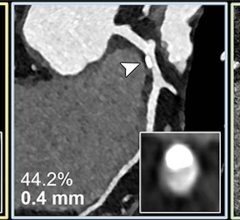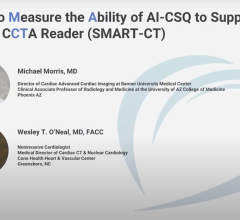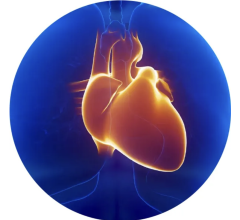

August 11, 2011 – GE Healthcare announced U.S. Food and Drug Administration (FDA) clearance of Optima CT660 – a compact computed tomography (CT) system offering improvements from its predecessors in diagnostic capabilities at low dose levels. The system is designed for sustainability and ease-of-use.
Powered by GE’s advanced CT technologies and applications, the intelligent platform is scalable from 32 to 128 slices through purchasable options and enables fast, high performance imaging for patients in a variety of clinical settings, including cardiac, neurological, emergency room and routine CT.
The system is already in use at hundreds of sites across Europe, Latin America and Asia. It is the first CT system that is both ecomagination and healthymagination-certified, two of the company’s global initiatives aimed at transforming healthcare delivery through innovation, partnerships and sustainability.
Based on customer demand and designed with the company’s high definition (HD) technologies, the device takes the known and trusted capabilities of the LightSpeed Volume CT (VCT) to a whole new level. It assists healthcare professionals in delivering confident, personalized patient care – combining GE’s dose-optimizing ASiR (Adaptive Statistical Iterative Reconstruction) technology, improved workflow features, and advanced applications for cardiovascular, oncology, neurology, CT angiography and other fields.
In cardiovascular settings, the system is designed to scan the heart efficiently with accurate and reliable clinical results. Combining ASiR and Snapshot Pulse with adaptive gating technology, patient dose may be reduced compared to traditional helical scan techniques. The CT Advantage Workstation (AW) cardiovascular system may also help accelerate workflow with enhanced post-processing automation and reliability.
With AW’s suite of oncology applications, the system helps physicians assess lesions at potentially lower dose, while also streamlining overall workflow for lesion detection, analysis and follow-up. For CT angiography, the system’s speed and image clarity may reduce the trade-off between coverage and high resolution.
A compact footprint combined with a modular design opens the door to advanced, low dose imaging for many customers constrained by space.
An ecomagination-certified product, the device uses about 60 percent less energy than previous-generation scanners. Additionally, its lighter weight reduces transportation costs while its environmental design addresses refurbishment and end-of-life recycling.
Other new design features include automatic table positioning and the company’s first color 12-inch integrated gantry display monitor.
Traditionally, lowering CT dose increases noise, creating an undesirable trade-off between clear images and reduced X-ray dose. To overcome this conventional CT challenge and achieve As Low As Reasonably Achievable (ALARA) dose levels, the system utilizes GE’s ASiR technology. Its design may allow for reduced mA in the acquisition of diagnostic images, thereby reducing the required X-ray dose.
The system also features tools that help clinical users manage dose. The standard “Dose Check” technology can notify and alert users prior to scanning if the estimated dose is above their institution’s set values. It requires explicit user authority checks when estimated dose exceeds the alert value and enables specifically defined pediatric and adult alert values. The Dose Check feature also provides for audit logging, review and protocol change control capabilities.
For more information: www.gehealthcare.com


 May 01, 2024
May 01, 2024 








